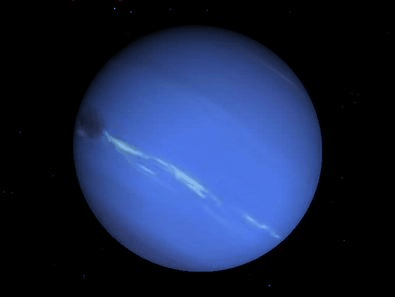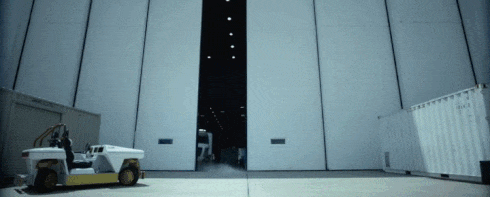Space-m17-blog - SpaceForLife

More Posts from Space-m17-blog and Others
Hot & Steamy RS-25 Engine Test

Today, we tested the RS-25 engine at Stennis Space Center in Mississippi, and boy was it hot! Besides the fact that it was a hot day, the 6,000 degree operating temperature of the hot fire test didn’t help things. This engine is one of four that will power the core stage of our Space Launch System (SLS) into deep space and to Mars. Today’s test reached 109% power and burned 150,000 gallons of liquid oxygen and 60,000 gallons of liquid hydrogen. When SLS launches with all 4 of its engines, it will be the most powerful rocket in the world!

This engine was previously used to to fly dozens of successful missions on the space shuttle, so you might be asking, “Why are we spending time testing it again if we already know it’s awesome?” Well, it’s actually really important that we test them specifically for use with SLS for a number of reasons, including the fact that we will be operating at 109% power, vs. the 104% power previously used.

If you missed the 535-second, ground rumbling test today – you’re in luck. We’ve compiled all the cool stuff (fire, steam & loud noises) into a recap video. Check it out here:

(3 June 1965) — Overall view of the Mission Control Center in Houston, Texas, during the early hours of the Gemini-Titan 4 spaceflight. Photo credit: NASA







Full project here: https://www.behance.net/louisdazy
Tour NASA with One Direction

You might have heard, One Direction filmed their ‘Drag Me Down’ music video at NASA’s Johnson Space Center, and we know you’re dying to take a tour of everything they saw. So, here we go…
1) Space Exploration Vehicle (SEV)

Even though Louis is roving around Johnson Space Center in our Space Exploration Vehicle, its intended destination is quite different. The SEV will be used for in-space missions and for surface explorations of planetary bodies, including near-Earth asteroids and Mars!
2) Robonaut

Harry and Robonaut bonded during their visit to Johnson Space Center for the filming of their music video. This robot will help humans work and explore in space. Working side by side with humans, or going where the risks are too great for people, robots will make it so we never get ‘dragged down’!
3) Partial Gravity Simulator & Space Station Mockup Bike

You can find Niall floating around in our Partial Gravity Simulator, aka POGO, in the new music video. This tool is used to provide accurate simulations of reduced gravity. Astronauts use this for training and to learn how to perform tasks in space.
While Niall floats with POGO, Liam is training on the International Space Station Mockup Bike, aka CEVIS. This bike provides aerobic exercise and is used to countermeasure the harmful effects of exposure to microgravity while on the space station.
4) Orion Spacecraft

The Orion spacecraft will be the first of its kind that will carry humans to deep space and to Mars! It will be the safest, most advanced spacecraft ever built, and Harry, Niall, Louis and Liam all got to check it out.
5) T-38 Jets

Flying these T-38 jet trainers are an important part of preparing to be an astronaut. Flying and landing them acts as a real-life simulation for practicing spacecraft operations. They can even fly at supersonic up to Mach 1.6, and can put their pilots through more than seven Gs!

Robonaut at JSC. nasa
Ten Years After Katrina

As we remember the devastation that Hurricane Katrina caused ten years ago, we also look to the improvements made in the past decade in storm prediction and forecasting.
Hurricane Katrina impacted many people, businesses and communities; and even two NASA facilities were hit by the storm. Marshall Space Flight Center and Michoud Assembly Facility were both hit by the harsh storm (seen below).

During Hurricane Katrina in 2005, our satellites were hard at work monitoring and watching the storm from above. Thanks to the higher resolution models we have today, simulations can recreate historical storms, like the below of Hurricane Katrina. Scientists can then study these and learn about past events.

Surprisingly, the United States hasn’t experienced the landfall of a Category 3 hurricane or lager since 2005. This is the longest period of time that has passed without a major hurricane making landfall in the U.S. since reliable records began in 1850.

Although we don’t know when a severe storm will form, we do know that advancements in technology can help us better prepare and predict its path. So, on this ten year mark of this devastating storm, we look back to remember what we saw: https://www.flickr.com/photos/gsfc/sets/72157656646633089
Sea Level Rise

For thousands of years, sea level has remained relatively stable. But now, Earth’s seas are rising. Since the beginning of the 20th century, they have risen about eight inches, and more than two inches in the last 20 years alone!

As water warms, it expands and takes up more space. That means that when oceans warm, the sea level rises. This summer, we’ve been researching exactly how global warming has impacted Greenland’s ice sheet. Our ICESat-2 mission will use a laser to measure the height of the planet’s surface. Over time, we will be able to provide a record of elevation change, and estimate how much water has melted into the ocean from land ice change.
So how much ice are we actually losing? Great question, but the answer might shock you. In Greenland alone, 303 gigatons of ice was lost in 2014!

Since we know that ice is melting, we’re working to gain a better understanding of how much and how fast. We’re using everything from planes, probes and boats, to satellites and lasers to determine the impact of global warming on the Earth’s ice.

Follow along for updates and information: http://climate.nasa.gov/

(12 Nov. 1966) — Astronaut James A. Lovell is photographed inside his Gemini spacecraft during the Gemini-12 mission. Astronaut Edwin Aldrin is seen in the background and to the left. Photo credit: NASA

Interstellar bow
-
 sensuousnonsense liked this · 4 months ago
sensuousnonsense liked this · 4 months ago -
 presspunchpress liked this · 4 months ago
presspunchpress liked this · 4 months ago -
 soulofatree liked this · 11 months ago
soulofatree liked this · 11 months ago -
 myownconsultant reblogged this · 11 months ago
myownconsultant reblogged this · 11 months ago -
 myownconsultant liked this · 11 months ago
myownconsultant liked this · 11 months ago -
 messagesfromthestars8 liked this · 11 months ago
messagesfromthestars8 liked this · 11 months ago -
 baddestvenus-in-virgo reblogged this · 11 months ago
baddestvenus-in-virgo reblogged this · 11 months ago -
 slepkane liked this · 11 months ago
slepkane liked this · 11 months ago -
 rowecommaadam reblogged this · 1 year ago
rowecommaadam reblogged this · 1 year ago -
 m-eltdown reblogged this · 1 year ago
m-eltdown reblogged this · 1 year ago -
 whippedcreamburrito reblogged this · 1 year ago
whippedcreamburrito reblogged this · 1 year ago -
 kleoppatra reblogged this · 1 year ago
kleoppatra reblogged this · 1 year ago -
 baddestvenus-in-virgo reblogged this · 1 year ago
baddestvenus-in-virgo reblogged this · 1 year ago -
 baddestvenus-in-virgo liked this · 1 year ago
baddestvenus-in-virgo liked this · 1 year ago -
 pachucocholosychundos reblogged this · 1 year ago
pachucocholosychundos reblogged this · 1 year ago -
 pachucocholosychundos liked this · 1 year ago
pachucocholosychundos liked this · 1 year ago -
 msbrandan liked this · 3 years ago
msbrandan liked this · 3 years ago -
 concupiscience reblogged this · 3 years ago
concupiscience reblogged this · 3 years ago -
 prala liked this · 3 years ago
prala liked this · 3 years ago -
 mangoeclair3 liked this · 3 years ago
mangoeclair3 liked this · 3 years ago -
 esotericottage reblogged this · 4 years ago
esotericottage reblogged this · 4 years ago -
 esotericottage liked this · 4 years ago
esotericottage liked this · 4 years ago -
 bluebear-d reblogged this · 4 years ago
bluebear-d reblogged this · 4 years ago -
 cantleavethekingdom reblogged this · 4 years ago
cantleavethekingdom reblogged this · 4 years ago -
 sereiaxz liked this · 4 years ago
sereiaxz liked this · 4 years ago -
 blackantlers liked this · 4 years ago
blackantlers liked this · 4 years ago -
 cuibdepiatrasileguma reblogged this · 4 years ago
cuibdepiatrasileguma reblogged this · 4 years ago -
 cuibdepiatrasileguma liked this · 4 years ago
cuibdepiatrasileguma liked this · 4 years ago -
 glitterypoetrycupcake liked this · 4 years ago
glitterypoetrycupcake liked this · 4 years ago -
 spoiledhoneybaby liked this · 4 years ago
spoiledhoneybaby liked this · 4 years ago -
 splashing-water reblogged this · 5 years ago
splashing-water reblogged this · 5 years ago -
 somethinginspiringhere reblogged this · 5 years ago
somethinginspiringhere reblogged this · 5 years ago -
 murderess-x liked this · 5 years ago
murderess-x liked this · 5 years ago -
 litostblog liked this · 5 years ago
litostblog liked this · 5 years ago -
 joga-luce liked this · 5 years ago
joga-luce liked this · 5 years ago -
 earthliingx reblogged this · 5 years ago
earthliingx reblogged this · 5 years ago -
 xyzdghun liked this · 6 years ago
xyzdghun liked this · 6 years ago -
 dragonessmilk reblogged this · 6 years ago
dragonessmilk reblogged this · 6 years ago -
 rh35211 liked this · 6 years ago
rh35211 liked this · 6 years ago -
 kyhuk reblogged this · 6 years ago
kyhuk reblogged this · 6 years ago -
 ramth reblogged this · 6 years ago
ramth reblogged this · 6 years ago
I love space. I've been to space camp in Huntsville Alabama and I am planning on going every summer. I look forward to be an astronaut for nasa on the sls that is planned to be launched 2018. And the manned mission 2030. So yeah I won't let anything get in my way.
138 posts